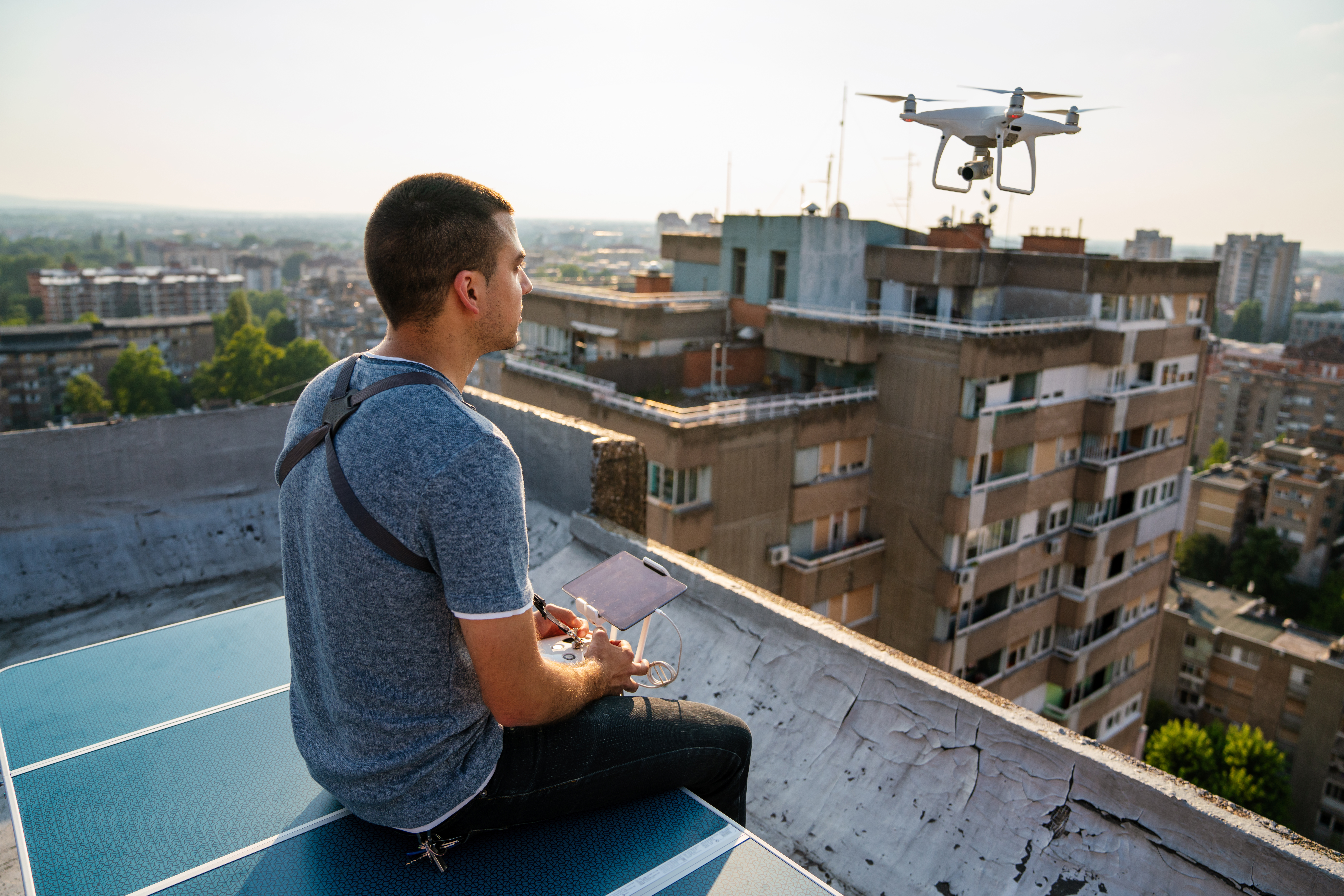Drones have revolutionized how we capture landscapes, document events, and even conduct inspections. Companies like Dronevideos make it easier to access professional drone footage for these purposes. However, piloting a drone is not as straightforward as it might seem, and it comes with its own set of challenges. Many beginners (and even experienced users) make mistakes that could lead to crashes, legal trouble, or lost equipment. If you’re new to drone flying or looking to improve your skills, it’s crucial to understand and avoid these common pitfalls.
This article will cover the most frequent mistakes made by drone pilots and how to avoid them to ensure a safe and enjoyable flying experience. By understanding these common issues, you’ll be well-equipped to fly confidently, protect your investment, and maximize your drone’s potential.
1. Neglecting Pre-Flight Checks
Why It Matters
Skipping pre-flight checks is one of the most common mistakes drone pilots make. Just like an airplane, a drone needs thorough pre-flight checks to ensure everything is working correctly. Failing to do so can lead to malfunctions mid-flight, potentially resulting in damage to your drone or injury to people nearby.
How to Avoid This Mistake:
- Inspect the Drone: Check the propellers for damage, ensure the battery is charged, and make sure that all parts are securely attached.
- Update Firmware: Make sure the drone’s firmware and any apps you’re using are updated. Updates often include important fixes and new safety features.
- Check the Weather: Make sure weather conditions are favorable for flying. Strong winds, rain, and fog can all be problematic for drone flights.
2. Flying in Restricted or Dangerous Areas
Why It Matters
Flying your drone in restricted areas is not just dangerous—it can also be illegal. Many drone pilots overlook local regulations and end up flying in no-fly zones such as airports, military bases, or urban areas, risking fines or other legal consequences.
How to Avoid This Mistake:
- Use Flight Apps: Apps like AirMap, Kittyhawk, or the FAA’s B4UFLY provide real-time maps of no-fly zones, making it easy to stay compliant.
- Understand Local Regulations: Take time to research drone regulations in the area where you’re flying. Many countries have their own rules regarding how high you can fly and where you can operate drones.
- Avoid Crowded Areas: It’s best to avoid flying over large crowds, as this can lead to accidents and safety concerns. Stay within visual line of sight and keep away from areas with heavy pedestrian traffic.
3. Ignoring Battery Life
Why It Matters
Running out of battery mid-flight is a major cause of drone crashes. When a drone’s battery depletes, it can either land suddenly or fall from the sky, putting it and anything below it at risk of damage.
How to Avoid This Mistake:
- Keep Track of Battery Levels: Most drones have battery indicators on their controllers or apps. Monitor these levels continuously during your flight.
- Return Home Early: Don’t push your drone to its limits. Plan to return the drone when it reaches about 25-30% battery capacity to leave a buffer for unexpected issues like high winds or navigation errors.
- Carry Spare Batteries: If you need more flight time, invest in spare batteries. This will ensure you have enough power without risking your drone.
4. Flying Without Adequate GPS Signal
Why It Matters
Drones use GPS for location tracking, stabilization, and for features like return-to-home (RTH). Flying without a strong GPS signal can cause your drone to drift or become disoriented, making it hard to control.
How to Avoid This Mistake:
- Check GPS Signal Before Takeoff: Ensure your drone has a strong GPS lock before taking off. Most drones will display the number of GPS satellites they are connected to—ensure it’s a strong and stable connection.
- Calibrate Compass and Sensors: If your drone prompts you to calibrate its compass or sensors, take the time to do so. This will ensure that the GPS functions accurately and the drone flies smoothly.
5. Overestimating Your Skill Level
Why It Matters
Flying a drone might look easy, but it requires practice and understanding. Overestimating your abilities can lead to crashes, particularly when trying advanced maneuvers or flying in challenging environments.
How to Avoid This Mistake:
- Practice in Open Areas: Before attempting advanced moves, practice in wide, open areas where there are no obstacles, such as fields or large parks.
- Use Beginner Mode: Many drones have a “beginner mode” that limits speed, altitude, and distance, giving you more time to react and learn the controls comfortably.
- Progress Gradually: Start by mastering the basics of drone control, like hovering, turning, and maintaining altitude. Gradually progress to more advanced techniques only when you feel completely comfortable.
6. Poor Situational Awareness
Why It Matters
Drones are incredibly mobile, but that means they can easily encounter obstacles if you’re not paying attention. Trees, power lines, buildings, and even birds can all pose risks when flying.
How to Avoid This Mistake:
- Maintain Visual Line of Sight: Always keep your drone within visual line of sight. This will help you avoid obstacles that may not be visible through the drone’s camera.
- Scout the Area: Before flying, do a quick survey of the area. Look for potential obstacles, such as tree branches, power lines, or people, and plan your flight path accordingly.
- Use Obstacle Sensors: Most modern drones come with sensors that detect obstacles. Make sure these sensors are activated and functional to provide an added layer of safety.
7. Ignoring Weather Conditions
Why It Matters
Weather has a significant impact on drone performance. Strong winds can cause your drone to drift or lose stability, while rain or snow can damage the electronics.
How to Avoid This Mistake:
- Check the Forecast: Before flying, always check the weather forecast. Wind speeds above 10-15 mph can make flying difficult for smaller drones, while rain or snow should always be avoided.
- Use Wind Caution: Even if it’s a clear day, pay attention to wind gusts. Windy conditions at higher altitudes can be more intense than on the ground, which might affect your drone’s control and battery life.
8. Failing to Understand the Return-to-Home (RTH) Feature
Why It Matters
Most modern drones come with an RTH feature, which allows the drone to automatically return to the takeoff point. However, many pilots don’t understand how this feature works or when to activate it, leading to issues like crashes, lost drones, or landings in undesirable locations.
How to Avoid This Mistake:
- Set the Correct Home Point: Before every flight, make sure the home point is correctly set. This ensures the drone knows where to return if the signal is lost or the battery runs low.
- Understand RTH Height: Set a proper return-to-home altitude, so the drone avoids obstacles like buildings or trees when coming back. Many drones allow you to set this height manually—ensure it’s high enough to clear any obstacles.
9. Flying Indoors Without Proper Precautions
Why It Matters
Flying a drone indoors can be significantly more challenging than flying outdoors. There are more obstacles, and without GPS, drones may rely solely on sensors to maintain stability, which can be less reliable.
How to Avoid This Mistake:
- Use Propeller Guards: If you’re flying indoors, always use propeller guards to protect both the drone and the environment from accidental bumps.
- Fly Slowly: Fly at reduced speeds to give yourself more time to react to obstacles like walls, ceilings, and furniture.
- Practice First: Indoor flying is more difficult, especially for beginners. Practice controlling the drone outdoors before attempting indoor flights.
10. Not Having Insurance or Registration
Why It Matters
Many countries require drones to be registered with aviation authorities, and not doing so can result in fines or other legal penalties. Additionally, drones are valuable pieces of equipment that can crash or be damaged easily, making insurance a smart decision.
How to Avoid This Mistake:
- Register Your Drone: In the U.S., for example, the FAA requires drones above a certain weight to be registered. Make sure you check the local laws in your area and comply accordingly.
- Get Insurance: Drone insurance can cover you for accidental damage, theft, or liability in case of accidents. This can give you peace of mind, particularly if you’re using your drone commercially.
Conclusion
Flying a drone can be an incredibly rewarding experience, but it comes with responsibilities. By avoiding common mistakes—like neglecting pre-flight checks, ignoring weather conditions, or overestimating your skill level—you can protect your drone, stay compliant with regulations, and enhance your flying experience. Remember, drone piloting requires practice, patience, and ongoing learning.
By following these tips and taking time to understand your drone and the environment in which you’re flying, you’ll not only enjoy safer and more successful flights but also become a more skilled pilot. Whether you’re flying for fun, photography, or professional work, minimizing mistakes will ensure your drone’s longevity and your personal safety.




